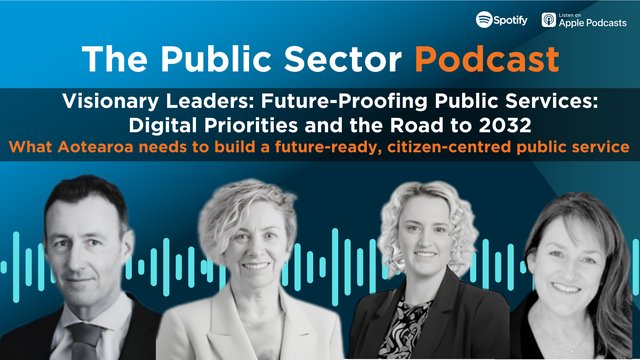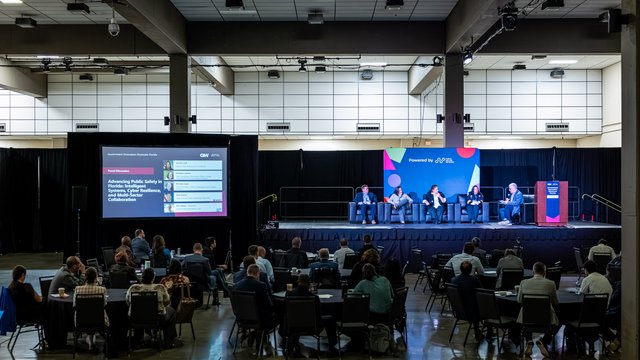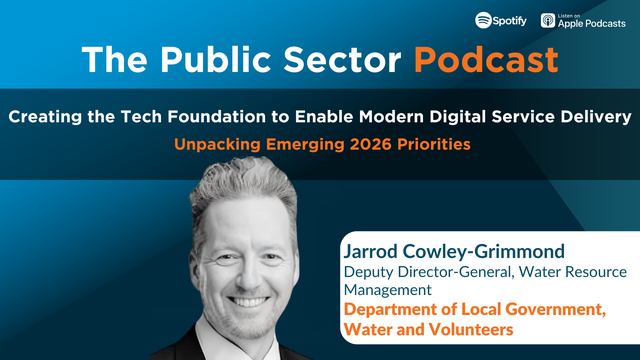

What puts the public sector on prospective employers radars?
Based off key insights from Innovate NSW, the following strategy was shaped by the session "Developing Capabilities for The Future: Investing in People Who Will Innovate, Design, And Deliver Great Outcomes for Customers" with:
- Jody Grima, Acting Deputy Secretary, Corporate Services/COO, NSW Department of Customer Service
- Shaun Ruming, Deputy Secretary/Chief People Officer, NSW Department of Education
- Hannah Tonkin, NSW Women’s Safety Commissioner, Department of Communities and Justice
Public sector hiring practices aim to attract, develop, and retain talent to ensure effective and efficient delivery of services to the community. Key goals include providing meaningful work, offering autonomy, and fostering growth and development opportunities. Challenges include addressing mental health issues, ensuring flexibility, and managing diversity and inclusion. However, opportunities lie in leveraging these aspects to create a more attractive and supportive work environment, ultimately enhancing the workforce experience (WX) and achieving better outcomes for the public.
What’s the Public Sector Getting Right?
The public sector already stands out as an attractive employer due to several factors. First and foremost, it offers meaningful work where employees can see the direct impact of their efforts on the community. This sense of purpose is a significant motivator. Additionally, the public sector provides autonomy, allowing employees to have a say in how they perform their tasks within supportive structures and systems.
Retention of talent in the public sector is also driven by its commitment to growth and learning. A culture that embraces feedback and encourages continuous development fosters a learning environment where employees feel valued and motivated to improve. Flexibility in work arrangements is another critical aspect, with options such as part-time work, job sharing, and compressed hours accommodating diverse employee needs and contributing to work-life balance. This is particularly beneficial for women, who often shoulder the majority of caring responsibilities outside of work.
"I think it's a balance. I think it'd be an absolute mistake to mandate five days back in the office. I think we'd have massive turnover...Flexibility is actually one of our VP Attributes."
- Shaun Ruming, Deputy Secretary/Chief People Officer, NSW Department of Education
Furthermore, the public sector’s emphasis on safety and respect in the workplace, such as preventing sexual harassment and promoting respectful environments, enhances its attractiveness as an employer. The sector's commitment to inclusivity and diversity ensures that all employees feel they belong and can represent themselves safely at work. These factors collectively contribute to making the public sector an appealing and supportive employer.
What will it take to become an Employer of Choice?
To become an employer of choice, the public sector needs to implement several key changes in its workforce experience and hiring practices. Firstly, enhancing psychological safety and mental well-being is crucial. Providing environments where employees feel safe and supported is essential for their overall health and productivity. This involves clear role definitions and autonomy in the workplace, allowing employees to understand their responsibilities and achieve success.
Flexibility must go beyond remote working to include part-time options, job sharing, and adaptable working hours. This flexibility should be extended to all levels of the workforce, including senior roles, to ensure career progression opportunities are not hindered by rigid work structures. Additionally, fostering collaboration across regional and remote teams is vital. Creating regional hubs and collaboration events can help mitigate isolation and enhance team cohesion.
Another critical change is promoting diversity and inclusivity beyond gender. Ensuring that senior leadership reflects the diversity of the broader society, including people from different backgrounds and those with disabilities, is essential. The concept of "Safety by Design" should be integrated into government services to mitigate risks, particularly for vulnerable populations, such as those affected by domestic and family violence.
"We need to really be looking more broadly at the senior leadership in in the public sector and seeing that it's really representative of our whole society, not just gender."
- Hannah Tonkin, NSW Women’s Safety Commissioner, Department of Communities and Justice
Building a culture that emphasizes team success over individual achievements is also important. Encouraging a collaborative mindset where everyone has a voice and can contribute to the team’s success fosters innovation and a sense of belonging. Lastly, balancing remote and onsite work to maintain productivity, team building, and personal satisfaction is necessary. Structured opportunities for informal learning and on-the-job training should be provided to support growth and development, particularly for new graduates and early-career employees.
Culture eats strategy, but what does this look like in practice?
The public sector can encourage talent by changing cultural practices to drive innovation and inclusivity. Creating a workplace culture that values autonomy, innovation, and collaboration is key. Providing employees with the freedom to explore new ideas and work autonomously, while maintaining good governance arrangements, can stimulate creativity and innovation.
"Individuals don't succeed. It's teams that succeed. And how can you have that culture and mindset within your organization that everybody has a voice, everybody has the ability to contribute and that sense of bringing and bringing that team success together."
- Jody Grima, Acting Deputy Secretary, Corporate Services/COO, NSW Department of Customer Service
Promoting a culture of respect and safety is essential. This includes proactive measures to prevent sexual harassment and ensuring respectful interactions across the organization. Safety by Design principles should be applied to government services to protect vulnerable populations and create a customer-centric approach.
Encouraging cross-functional collaboration and breaking down silos within the organization can harness the collective intellect of the workforce. Regional and remote employees should be given opportunities to connect and collaborate with their peers, fostering a sense of community and shared purpose.
Furthermore, the public sector’s employee value proposition (EVP) should highlight its commitment to meaningful, purpose-driven work and values-based leadership. This can attract innovative, divergent thinkers who seek not only professional success but also personal fulfillment and societal impact.
Key Takeaways
Three key takeaways for improving public sector hiring practices and workforce experience are:
- Enhance flexibility and psychological safety to support employee well-being and productivity.
- Promote diversity and inclusivity at all levels, ensuring leadership reflects the broader society.
- Foster a culture of collaboration, innovation, and respect, making the public sector an attractive and supportive employer.
By addressing these areas, the public sector can position itself as an employer of choice, capable of attracting and retaining top talent while driving positive outcomes for the community.































